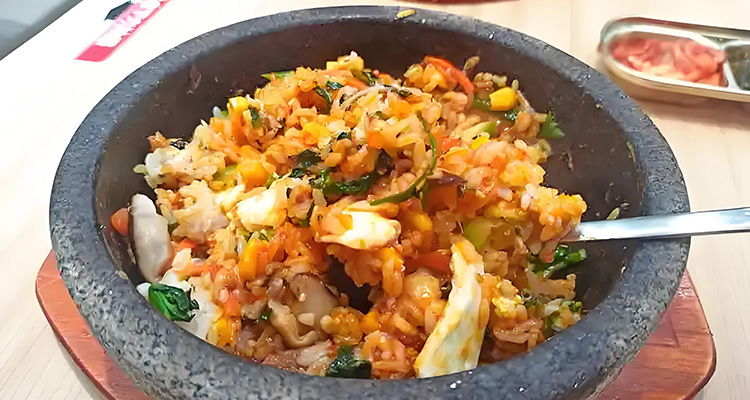Northeastern Stone Pot Bibimbap | Warm Dongbei Flavor
1. Origins of Stone Pot Bibimbap
When a sizzling stone pot arrives at your table, the sound of rice crackling mixes with colorful veggies and tender meat. The aroma fills the air — this is Northeastern Stone Pot Bibimbap, a dish that instantly brings warmth and energy to your table.
This dish has its roots in traditional Korean bibimbap but evolved uniquely in China’s Northeast region. It became popular in the mid-to-late 20th century with the cultural exchange between China and Korea. Locals added native ingredients, adapting the recipe to suit Chinese tastes, making it a beloved Dongbei comfort food for decades.
2. Cultural Meaning and Family Warmth
In Dongbei, Stone Pot Bibimbap is more than just food — it’s a symbol of family and friendship. Sharing a steaming bowl during cold winters brings people closer. It reflects the Northeastern spirit — warm, bold, and full of hospitality.
This dish is often served during gatherings, where everyone mixes their bowls with laughter and conversation. It embodies togetherness, comfort, and the essence of Dongbei cuisine — hearty, flavorful, and full of life.

3. Ingredients and Unique Flavor Layers
The base uses premium Northeastern rice, known for its soft, sticky texture. Fresh vegetables such as shredded carrots, spinach, bean sprouts, and mushrooms are added, along with thin slices of beef or pork.
The key element is the Korean chili paste (gochujang) and a raw egg. The stone pot itself, made from special clay, retains heat, allowing the rice to crisp at the bottom — creating the beloved golden crust known as guoba.
4. How It’s Made
Preparation is simple but precise. The stone pot is first heated until extremely hot. Cooked rice is added, followed by sautéed vegetables and meat. A raw egg is cracked on top, and a spoonful of chili paste is poured in.
As it reaches your table, the sizzling sound continues — that’s the magic of bibimbap. Stir everything quickly so the flavors blend perfectly, and every bite bursts with heat and aroma.

5. Texture and Taste
This dish offers a mix of textures and flavors: soft rice, crispy crust, juicy vegetables, tender meat, and a spicy-sweet sauce. Once stirred, every mouthful becomes a balanced mix of flavors — warm, spicy, and satisfying.
It’s not just a meal — it’s a sensory experience. You can smell the rice toasting, hear the sizzling, and taste the perfect harmony of ingredients.
6. Eating Tips
Authentic style? Stir it fast as soon as it’s served. Mix the rice, meat, veggies, and sauce evenly. You can adjust the spiciness to your liking. Enjoy the contrast between the soft rice and the crispy bottom layer.
Be careful — the stone pot is very hot! Use a spoon, not chopsticks, and mix before eating. Want to add a twist? Try adding seaweed or kimchi for extra flavor.

7. Where to Eat Northeastern Stone Pot Bibimbap
You can taste authentic versions at local Korean restaurants in Dongbei, such as “Old Northeastern Bibimbap House,” or in major city Korean eateries. Average prices range from ¥30 to ¥80.
When ordering, just say “Yi fen shiguo banfan” (一份石锅拌饭), and choose your spice level. Most places offer beef or pork options.
8. Home Cooking Made Simple
Want to make it at home? You can! Use a clay pot or a heavy pan instead of a stone pot. Heat it up, add rice, stir-fried vegetables, meat, a fried egg, and Korean chili paste. Stir and enjoy!
You might miss the crispy crust, but the flavor and fun remain. It’s perfect for family dinners or small get-togethers — warm, colorful, and full of Dongbei charm.

9. A Must-Try on Your Dongbei Food Journey
Don’t miss this dish when you travel through Northeastern China! Northeastern Stone Pot Bibimbap isn’t just food — it’s a taste of culture, tradition, and warmth.
Each spoonful captures the essence of Dongbei cuisine: bold, hearty, and comforting. Add it to your must-try list for a flavorful journey through China’s Northeast — one sizzling pot at a time.


